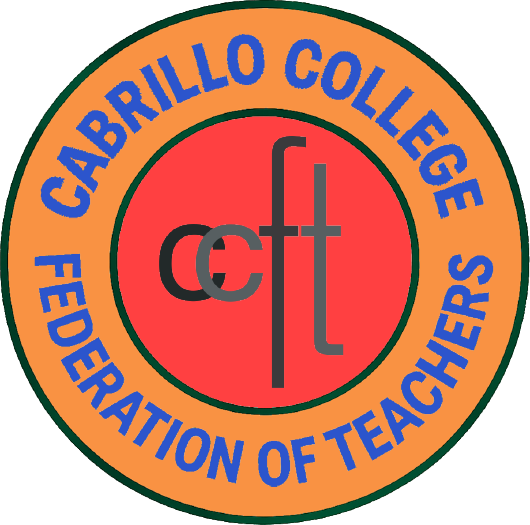Katie Woolsey
Last year CCFT negotiated with the college to create a pilot program for funding adjunct faculty participation in shared governance. The program designated several significant campuswide bodies, such as Faculty Senate and the Student Equity and Success committee, in order to create opportunities for adjuncts to serve in return for a nominal stipend. Part of this program requires adjuncts serving in these roles to report out to the campus about the work we’ve done. As CCFT’s adjunct representative to the Student Equity committee, I’ll share some context and information about our activities this semester.
Context: Student Equity
Many faculty on campus remain unaware or confused about what “student equity” means. The statewide Chancellor’s office has established a policy aimed at closing achievement gaps for targeted populations of students, including African American, Native American, and Latino students, veterans, foster youth, students with disabilities, and students at the basic skills level across the board. The new student equity plan has come with funding for each college to develop its own student equity plan and to allocate the funds to support specific activities that will result in measurable outcomes for the targeted student populations: increased access to the college and our courses, course completion, completion of basic skills sequence courses, and successful completion of degrees, certificates, and transfers. At Cabrillo, we are currently in our second round of student equity planning and funding allocation.
You can view the Chancellor’s office’s Student Equity Plan and information here:
http://extranet.cccco.edu/Divisions/StudentServices/StudentEquity.aspx
You can view Cabrillo’s Student Equity and Success materials, including our current Equity Plan, here:
https://www.cabrillo.edu/services/studserv/StudentEquitySuccess.html
Fall 2015
Earlier this semester a wide variety of campus programs and offices submitted proposals for the equity committee to consider funding specific programs, activities, and personnel directly related to our equity efforts. The committee has spent the Fall semester reviewing and vetting these proposals. With ongoing programs already approved and funded from the 2014-2015 year, our budget for new proposals is just over $500,000, and the volume of proposals we received greatly exceeded that budget. In selecting proposals to move forward, we focused on criteria like:
Is the proposal directly related to our Student Equity Plan? We looked at the specific relevance of the proposal to the goals laid out in our current Plan. Strong proposals explicitly and directly focused on creating supports for the target student groups identified by the Chancellor’s office, and on either creating or expanding specific activities that promote these students’ access to higher education and successful course and program completion once they’re here.
Does the proposal have clearly stated goals and measurable outcomes? The Equity Plan places a high emphasis on accountability and measurability. We considered whether a given proposal has clearly stated goals with measurable results that will allow us to assess its effectiveness. We placed a high priority on proposals that directly impact students, that draw on best practices, and that are likely to be able to achieve their stated goals.
Does the proposal abide by equity funding restrictions? We considered whether a proposed activity, program, or position is actually eligible for student equity funding. For example, although it’s pretty much agreed that hiring more faculty would help many of our departments better serve students, student equity money cannot be used for any positions that would generate FTEs.
Can the proposal be scaled and/or institutionalized? If the intervention works, can we scale it up, repeat it, or keep it going?
These were four of the criteria on which we focused. You can view the full rubric on our Student Equity page.
What now?
After reviewing proposals we were able to identify many that fit the student equity criteria and that look both promising and fundable, but the process isn’t over. The Committee’s recommendations will go next to Faculty Senate and CPC for review, and to the Governing Board for approval. Eventually, in 2016-2017 the college will be able to implement new efforts that will join the ongoing equity projects from this year. Along the way, these efforts will be tracked and their impacts measured according to the concrete goals laid out in our current Equity Plan:
- The college will improve the course completion rates among disproportionally impacted groups promoting them from ”great concern” or “concern” to “moderate concern” or “no concern area from 2014 to 2017.
- The college will raise the Basic Skills sequence completion rates among disproportionally impacted groups according to the degree of concern they have from 2014 to 2017.
All of this adds up to a sustained, long-term, campus-wide and statewide effort to support our students in areas of real and demonstrated need. It’s been a pleasure to serve, and I hope to report to you again next semester about the concrete efforts that our campus will be implementing.








